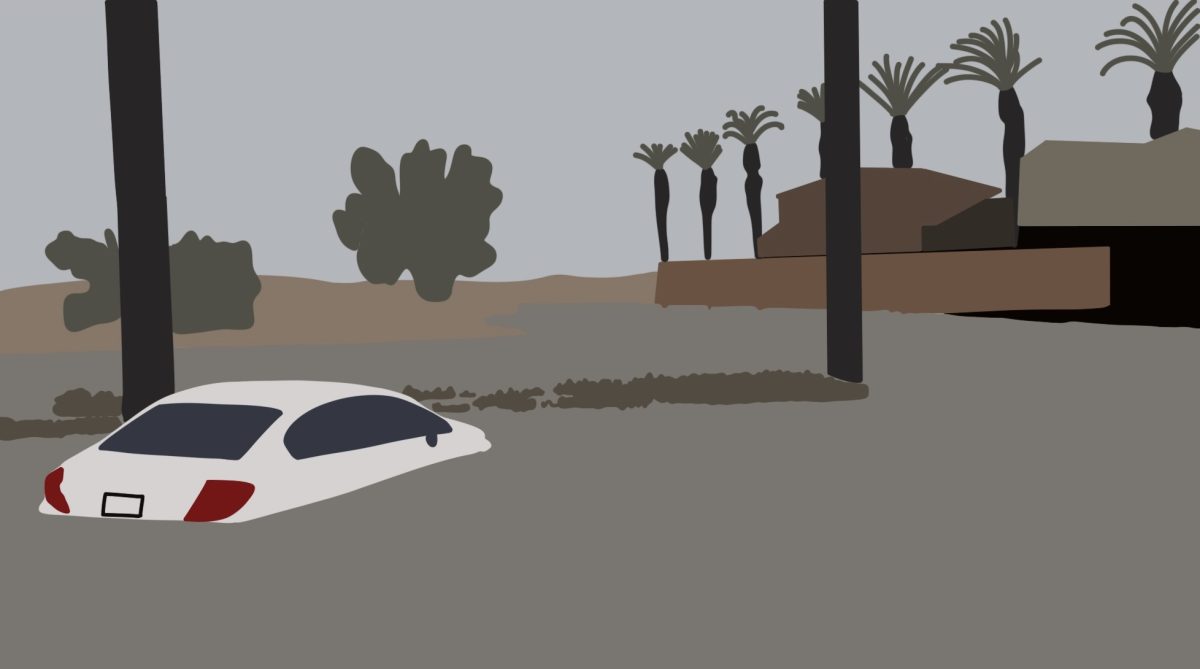The tropical storm Hurricane Hilary hit land in Southern California on Aug. 20, 2023 and proceeded to make its way up the west coast. It is believed that the storm was the product of a combination of factors, including El Nino, climate change, and a stagnant heat dome over the central U.S. According to the Nation Weather Service’s Weather Prediction Center, flood watches were issued not only in Southern California, but in Arizona, Nevada, Utah, Oregon, Idaho, and Washington.
Despite predictions that the storm would initially touch down in Mexico and cross into California, Hurricane Hilary made landfall in Southern California, making it the first tropical storm in that area since 1997 (CNN). On Aug. 19, California governor Gavin Newsom issued a state of emergency for all of Southern California, which proved to be necessary as the storm broke rainfall records (CBS). San Diego Mayor Todd Gloria told CNN, “We are not used to this level of precipitation, generally- certainly not in the middle of summer…With what we’re expecting, it may overwhelm us.”
As the storm proceeded to move up the coast, it brought with it power outages, flooding, and calls for residents to evacuate or shelter in place. While Hurricane Hilary broke records in nearly every state it passed through, it was the rainiest tropical system in the history of Idaho, Oregon, and Montana and was the first tropical storm to ever pass through Nevada (CNN). Even still, it was downgraded to a post-tropical cyclone on Aug. 21 (CBS).
A number of factors were required to work together to create a storm of this nature. Hurricane Hilary was formed south of Baja California and west of Mexico with sustained winds of 130 miles per hour, not uncommon for this region of the Eastern Pacific ocean. However, at the surface the water was 3.5 to 5 degrees Fahrenheit warmer than normal and this heat reached deep into the ocean (AP News).
El Nino, or a warming of parts of the largest tropical expanse of ocean on Earth that changes weather worldwide, contributed to these changes, however, long-term climate change is also responsible for the consistent rising of water temperatures (AP News).
Furthermore, the storm did not follow the traditional pattern and turn east after hitting land. A large hot air mass sitting over the central U.S. blocked the storm from turning, resulting in its progression up the west coast. What is unique about this mass is that it has not moved. It has been observed that more weather patterns are getting “stuck,” a consequence possibly resulting from changes in the Arctic climate as a result of global warming (AP News).
While Hurricane Hilary proved to be a record-breaking storm, unusual weather of this sort may be increasingly more common as the impact of climate change begins to take its toll.




